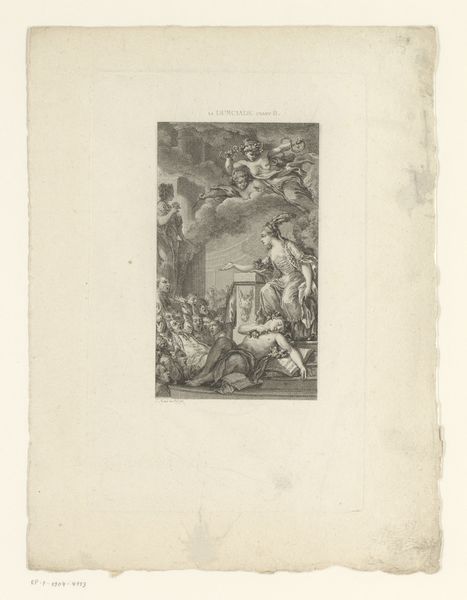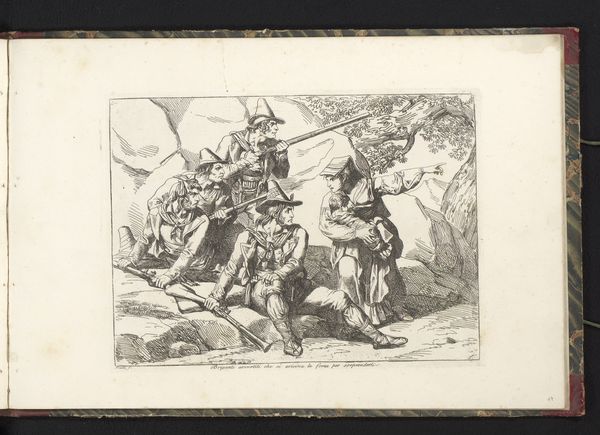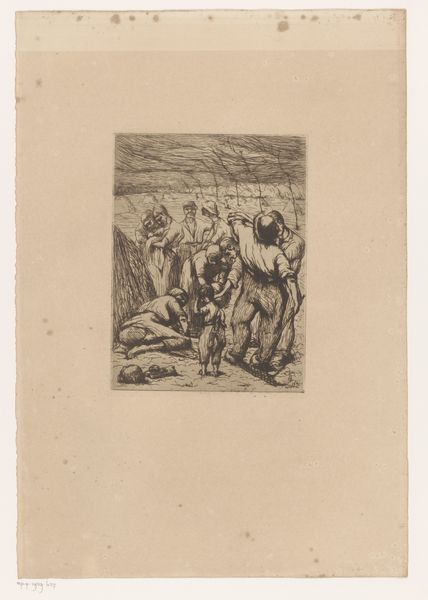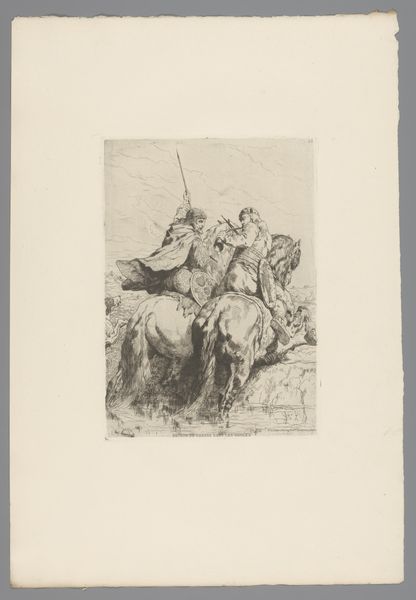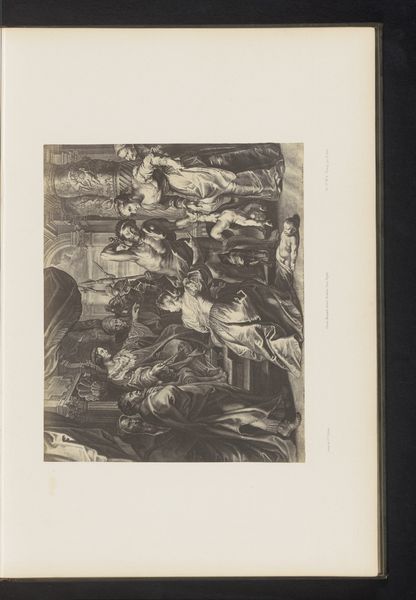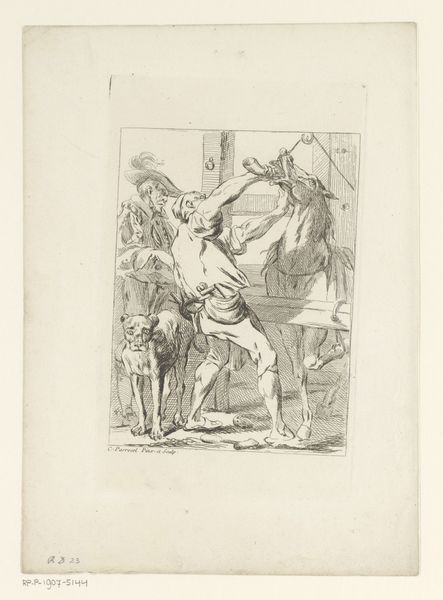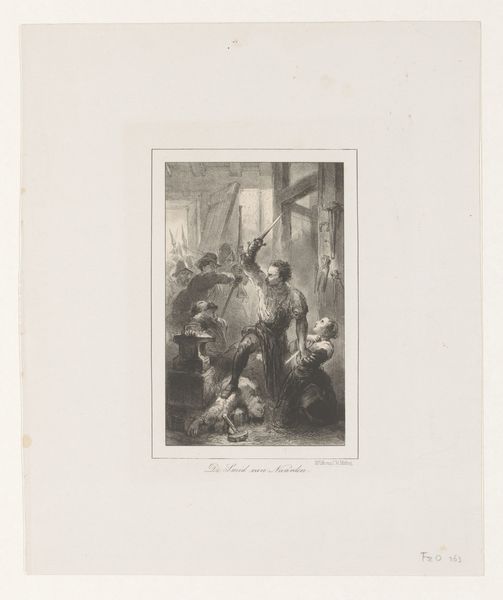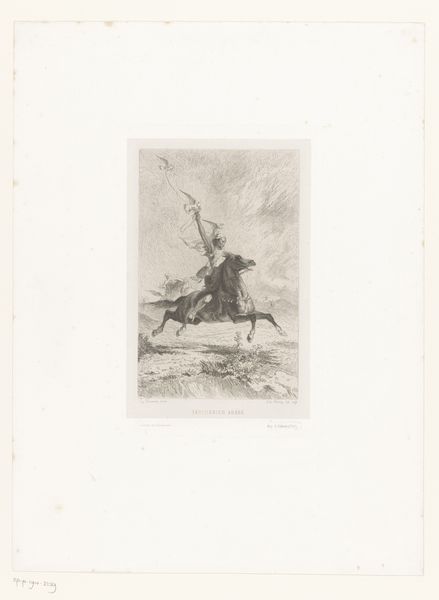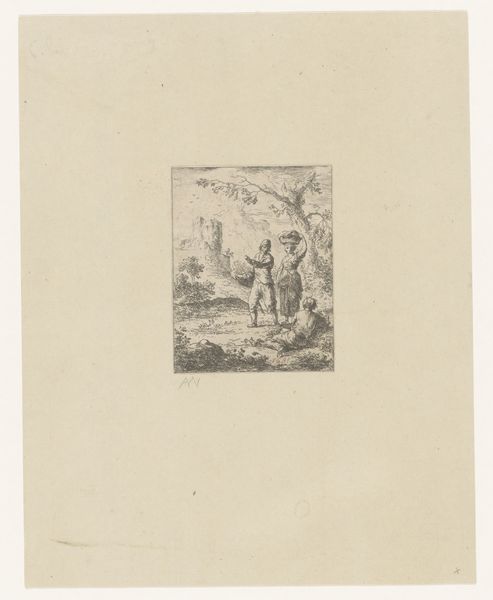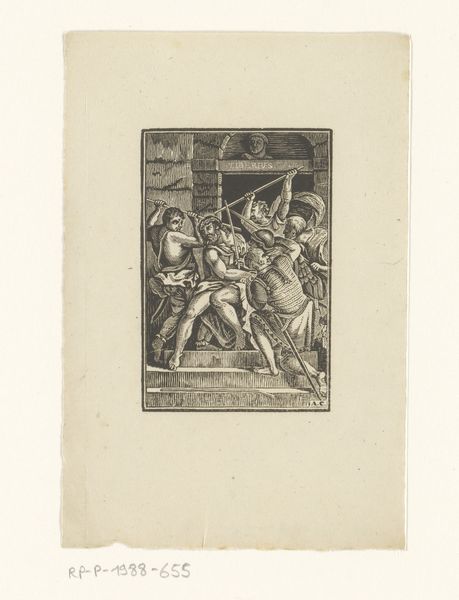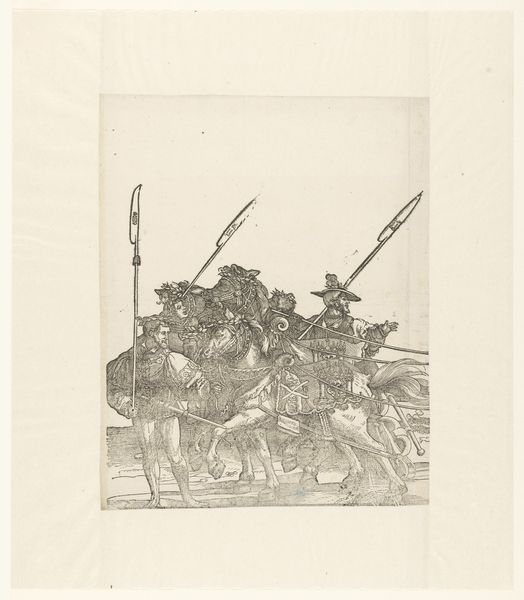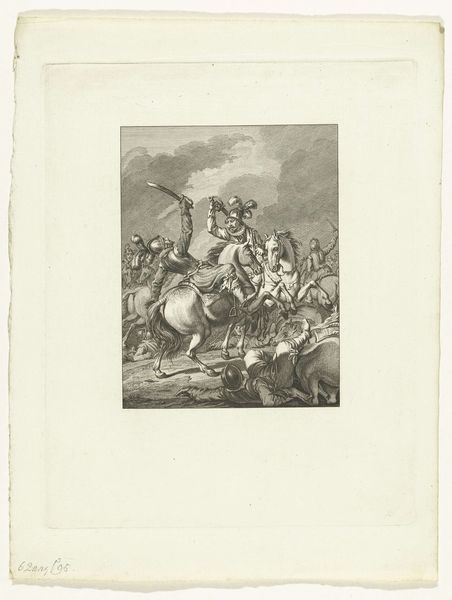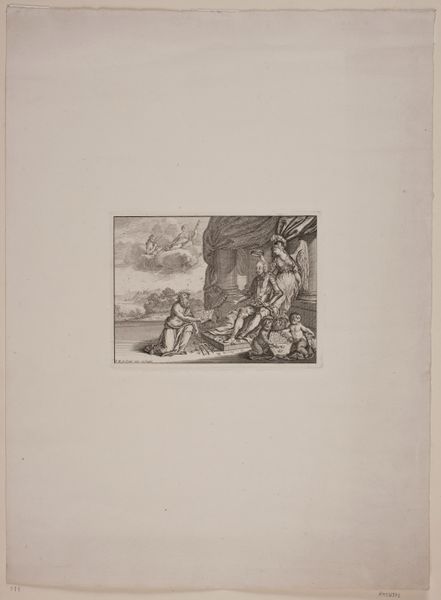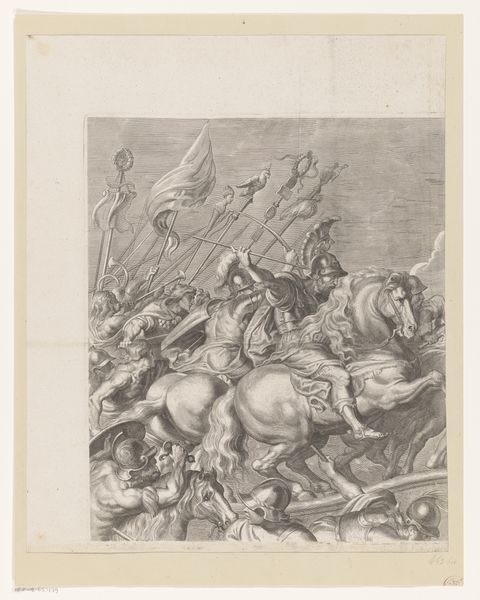
drawing, print, paper, ink, engraving
#
drawing
#
narrative-art
# print
#
landscape
#
figuration
#
paper
#
ink
#
romanticism
#
history-painting
#
engraving
Dimensions: height 496 mm, width 345 mm
Copyright: Rijks Museum: Open Domain
Curator: Look at this engraving, made between 1822 and 1834, titled "Christoffel draagt Christus door het water," now residing in the Rijksmuseum. It’s rendered in ink on paper. What are your initial thoughts? Editor: It strikes me as powerful—that overwhelming sense of burden, you know? You can almost feel the weight Christoffel is carrying; the textures of the clothing suggest real volume and strain. It’s interesting how much information is conveyed through relatively simple lines. Curator: Indeed. This print presents the narrative of Saint Christopher, a figure central to certain Christian beliefs. Note how it intertwines religious devotion and prevailing socio-political ideals about duty and the deserving recipient, in this case, Jesus. Editor: Absolutely, and seeing this narrative rendered as an engraving begs the question about process. I'm fascinated by the labor and skill required to produce such detailed imagery. The physical act of creating these lines, the precision required – it speaks to a very specific relationship between the artist, the materials, and the broader culture of printmaking. Curator: Well, consider then, the layers of power embedded. Who gets to represent this figure of Christoffel and how does that imagery reinforce the existing hierarchy between religious leaders and the populace? Whose interpretation prevails? This is where the political project is unveiled. Editor: That’s astute. And considering that the work is monochrome print and done by anonymous artist – the labor of production and reproduction in this format opens the image to be received to a wide audience, as dissemination is an integral element for broader social messaging. Curator: Precisely. And considering the period, in the 19th century when there's upheaval throughout Europe as well as overseas due to colonialism, what does that message convey during a period of so much displacement and oppression? It feels loaded, doesn’t it? Editor: It does. Considering it's an anonymous artist, tracing its consumption might unveil the socio-economic status of the consumers and tell us a different side to the history of this visual artifact. Thank you for pointing out that crucial context. Curator: It is fascinating to look at how materiality intersects and shapes broader narratives. Editor: Absolutely. Thank you for framing this around power structures!
Comments
No comments
Be the first to comment and join the conversation on the ultimate creative platform.
